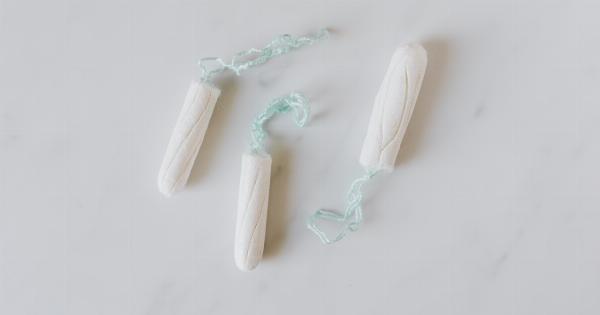A clean and well-maintained home is not only visually appealing but also plays a crucial role in maintaining good health. The quality of the air we breathe indoors has a direct impact on our respiratory system, especially our lungs.
With the increasing pollution levels outside, ensuring a clean and healthy living environment at home has become more important than ever. In this article, we will explore the various ways in which a clean home promotes healthy lungs and discuss the importance of maintaining cleanliness in different areas of our living space.
The Link Between Indoor Air Quality and Lung Health
Indoor air pollution can be equally harmful, if not more, than outdoor air pollution. In fact, the air pollutants indoors can be up to five times more concentrated than outdoor air.
These pollutants include dust, mold spores, pet dander, pollen, chemicals from cleaning products, and even volatile organic compounds (VOCs) released by furniture, carpeting, and paint.
When we inhale polluted air, these pollutants can irritate and inflame our lungs, leading to respiratory problems such as asthma, allergies, bronchitis, or even more serious conditions like lung cancer.
Individuals who spend a significant amount of time indoors, such as children, the elderly, or those with respiratory conditions, are especially vulnerable to the effects of poor indoor air quality.
The Importance of Cleanliness in Different Areas of the Home
1. Keeping the Floors Clean
Dust, pet dander, and other allergens often accumulate on floors, making regular cleaning essential. Sweeping or vacuuming the floors not only removes visible debris but also helps eliminate hidden pollutants.
Using a vacuum cleaner with a HEPA (High-Efficiency Particulate Air) filter can effectively trap small particles and prevent them from being released back into the air.
2. Maintaining a Dust-Free Environment
Dust can accumulate on various surfaces, including furniture, shelves, and electronics. Regular dusting with a damp cloth or electrostatic duster can help reduce the presence of dust, ensuring cleaner air to breathe.
It’s crucial to pay extra attention to areas that are often overlooked, such as ceiling fans, vents, and window blinds.
3. Controlling Humidity Levels
High humidity levels can create an ideal environment for mold and mildew growth, which can release spores into the air and lead to respiratory problems.
Using dehumidifiers in areas prone to moisture, such as bathrooms and basements, can help maintain optimal humidity levels and prevent mold formation.
4. Regularly Changing Air Filters
The air filters in our HVAC (Heating, Ventilation, and Air Conditioning) systems play a crucial role in maintaining indoor air quality. These filters trap dust, pollen, and other airborne particles, preventing them from circulating throughout the house.
Regularly changing these filters, typically every 1-3 months, ensures cleaner and healthier air.
5. Ventilating the Home
Proper ventilation is essential for clean indoor air. Opening windows and doors whenever possible allows fresh air to circulate, reducing the concentration of pollutants.
Additionally, using exhaust fans in the kitchen and bathroom helps eliminate odors, moisture, and cooking byproducts, further enhancing indoor air quality.
6. Maintaining Clean Bedding
Our beds can harbor dust mites, which are common indoor allergens. Washing bed sheets, pillowcases, and blankets regularly in hot water helps keep these allergens under control.
Additionally, using allergen-proof mattress and pillow covers can provide an extra layer of protection against dust mites.
7. Eliminating Mold and Mildew
Mold and mildew can grow in damp and poorly ventilated areas, such as bathrooms and basements. These fungal growths release spores that can worsen respiratory conditions.
Regularly inspecting these areas and promptly addressing any signs of mold or mildew growth is crucial for maintaining both cleanliness and lung health.
8. Avoiding Smoking Indoors
Secondhand smoke is a major indoor pollutant that can significantly impact lung health. Avoiding smoking indoors and designating smoking areas outside the home helps prevent the inhalation of harmful toxins present in cigarette smoke.
9. Using Natural Cleaning Products
Many conventional cleaning products contain harsh chemicals that can release volatile organic compounds into the air. These chemicals can be detrimental to lung health, especially in individuals with respiratory conditions.
Opting for natural or eco-friendly cleaning products reduces the exposure to such toxins, ensuring a cleaner and healthier home environment.
10. Regular Pest Control
Pests, such as cockroaches and rodents, carry allergens that can trigger asthma and allergies.
Implementing regular pest control measures and promptly addressing any infestations can help prevent the release of these allergens, keeping the indoor air clean.
Conclusion
A clean home contributes significantly to maintaining healthy lungs.
By following the aforementioned tips and incorporating good cleaning practices into our daily routine, we can reduce the concentration of indoor air pollutants and minimize the risk of respiratory ailments. Prioritizing cleanliness not only improves the visual appeal of our living spaces but also ensures a safe and healthy environment for ourselves and our loved ones.






























